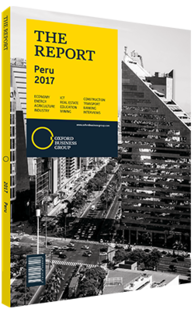Diego Muñoz-Nájar, President, Arequipa Chamber of Commerce: Interview

Interview: Diego Muñoz-Nájar
To what extent does mining act as a catalyst for the development of other sectors?
DIEGO MUÑOZ-NÁJAR: Mining is important for the region, and when done responsibly it contributes to the economic and social development of Arequipa. However, the relevance of the sector in the region should not overshadow efforts to achieve productive diversification. The private sector put a plan together to work with the public sector to diversify the economy. In a study conducted by US academic Michael Porter, the challenges and steps to be taken were determined. According to this study, Arequipa can capitalise on the fact that it has a mining cluster that can service mines in neighbouring regions, as well as in other countries. The study also highlights the region’s solid transportation networks, its financial resources, well-developed tourism and services industry, and a growing agro-industrial sector as key factors that will allow it to become a hub in the south of Peru.
How can the problem of informality be tackled and access to financing be enhanced?
MUÑOZ-NÁJAR: The role of Caja Arequipa, the region’s leading savings bank, has been crucial in the development of Arequipa through its financing of micro- and small businesses. Its success has been partially determined by its strong corporate governance. In fact, being able to keep politicians from interfering with its management has been an important part of its success in increasing inclusion levels. Incorporating more technology is key to continue enhancing financial inclusion.
What specific measures are successfully being implemented locally that could be extrapolated to the rest of the country?
MUÑOZ-NÁJAR: Employment creation is directly linked to the level of formality of the private sector. Taking into account that Arequipa is the second most important city in the country after Lima, the level of formality is obviously higher, which translates into higher levels of formal job creation. The level of informality remains high, however. The great challenge continues to be enhancing public and private sector cooperation. The public sector must understand that the private sector can use its experience in job creation and formalisation for the benefit of the region.
What role should the private sector play in bridging the formal housing gap?
MUÑOZ-NÁJAR: A clear framework is needed to bridge the formal housing gap. Adequate urban planning is also a requirement. Without it, the private sector will simply not invest. The current urban plan promotes development towards the slopes that surround the city. Not only does this make building more expensive, but it limits urban expansion, thus making the finished product more expensive for the consumer.
Therefore, Arequipa must expand towards flatter areas. The state needs to take the initiative in this regard. Another aspect is financing; interest rates must be lowered to increase access, and the way loans are awarded also needs to change as the same criteria should not be followed for formal and informal potential homeowners.
How important is the enhancement of inter-modal freight transport in guaranteeing the growth of exports from Arequipa?
MUÑOZ-NÁJAR: The chamber is in talks with the Ministry of Transport and the Ministry of Foreign Trade and Tourism about legislating the use of feeding ships. Larger vessels only dock in large ports, which are driven by supply and demand. What is needed for the enhancement of inter-modal transport is that smaller vessels that feed larger vessels be allowed to go through the Customs process in Matarani, rather than in other large ports. It would also make transport companies in the region far more competitive.
You have reached the limit of premium articles you can view for free.
Choose from the options below to purchase print or digital editions of our Reports. You can also purchase a website subscription giving you unlimited access to all of our Reports online for 12 months.
If you have already purchased this Report or have a website subscription, please login to continue.

